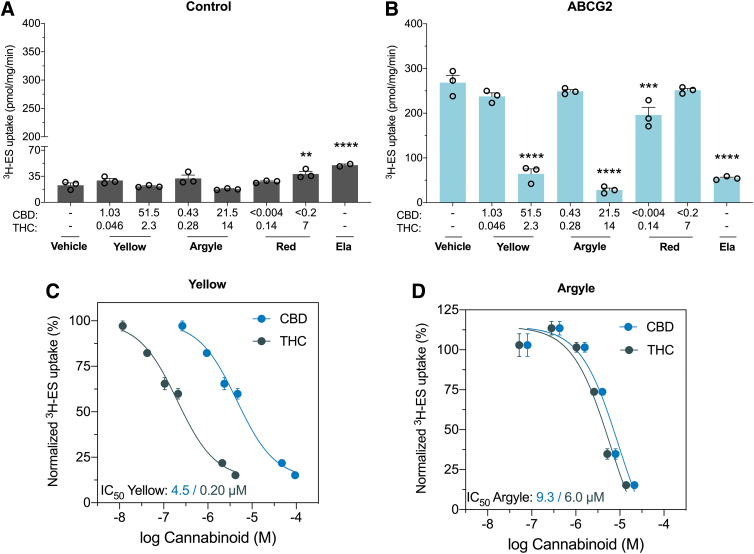FIG. 2.
Cannabis-based products Spectrum Yellow and Tweed Argyle inhibit ABCG2. Inside-out vesicles made from cells expressing human ABCG2, also known as breast cancer resistance protein, were used to screen the inhibitory potential of the three cannabis-based products. Average uptake of 3H-ES was measured in vesicles from cells (A) transfected with control vector or (B) expressing ABCG2 was quantified by liquid scintillation counting. Spectrum Yellow (Yellow), Tweed Argyle (Argyle), and Spectrum Red (Red) cannabis-based products were applied with final CBD and THC concentrations (μM) depicted (Ela; 5 μM). High doses of Spectrum Yellow and Tweed Argyle strongly inhibited ABCG2-mediated transport (**p<0.01, ***p<0.001, ****p<0.0001 compared with vehicle; one-way ANOVA followed by Dunnett's post hoc). Error bars represent SEM, with n=3 per group. Concentration–response curves for inhibition of ABCG2 transport of 3H-ES by (C) Spectrum Yellow and (D) Tweed Argyle. Uptake of 3H-ES was measured in the presence of varying concentrations of Spectrum Yellow and Tweed Argyle, and expressed as a percentage of response to vehicle treatment. Within each of the cannabis-based products, concentrations of THC (green symbols) and CBD (blue symbols) are plotted separately. Data are expressed as mean±SEM, with n=3 per group. Curves represent fit to a three-parameter log function. Ela, elacridar; ES, estrone 3-sulfate.

